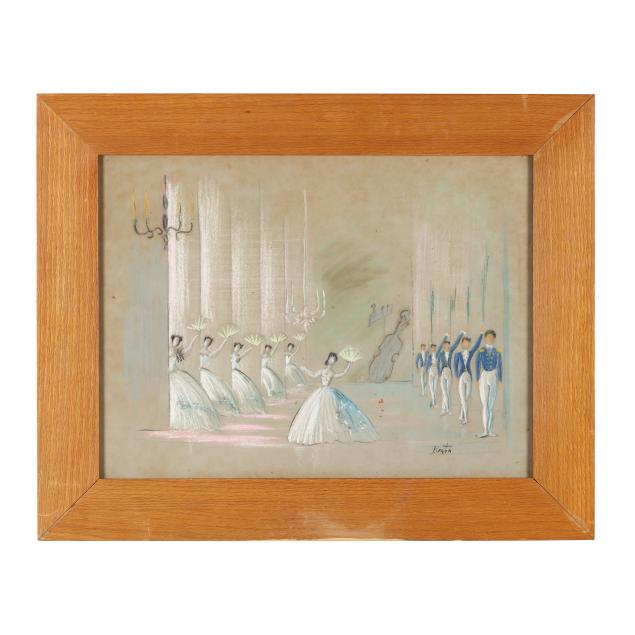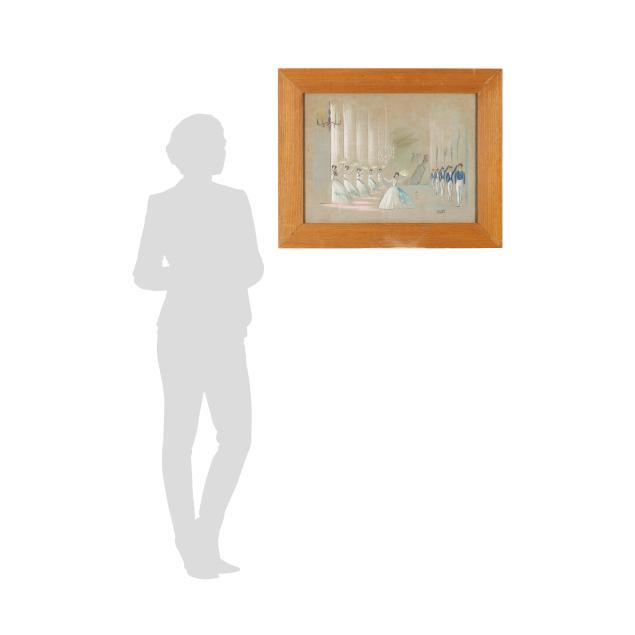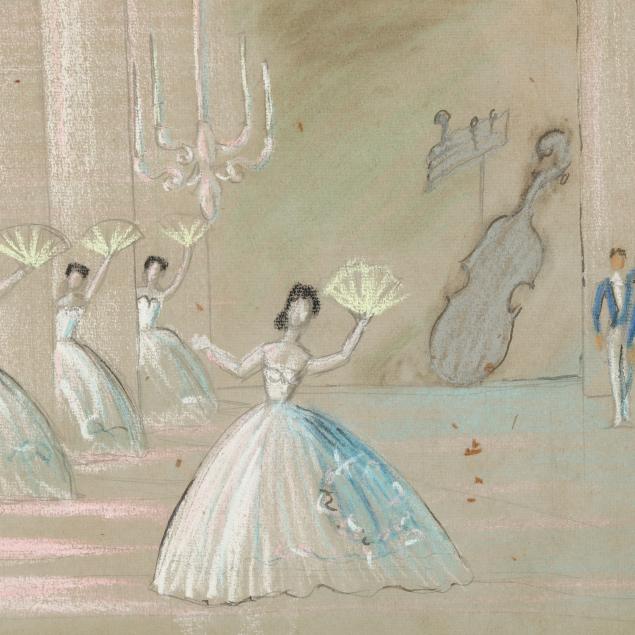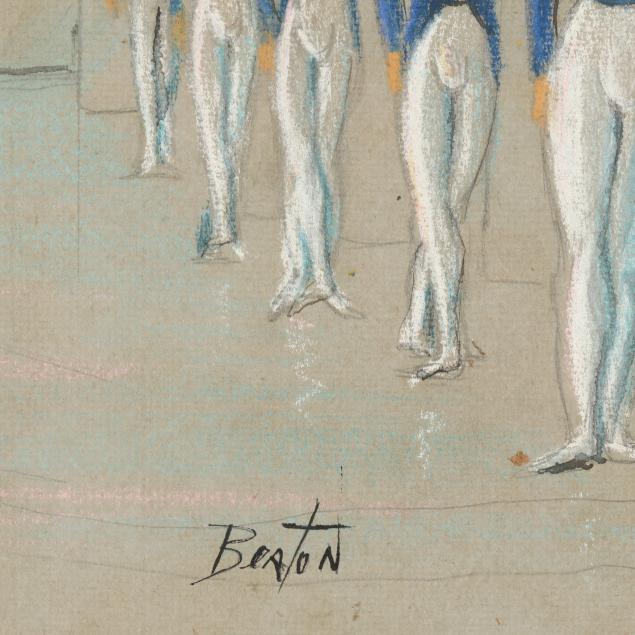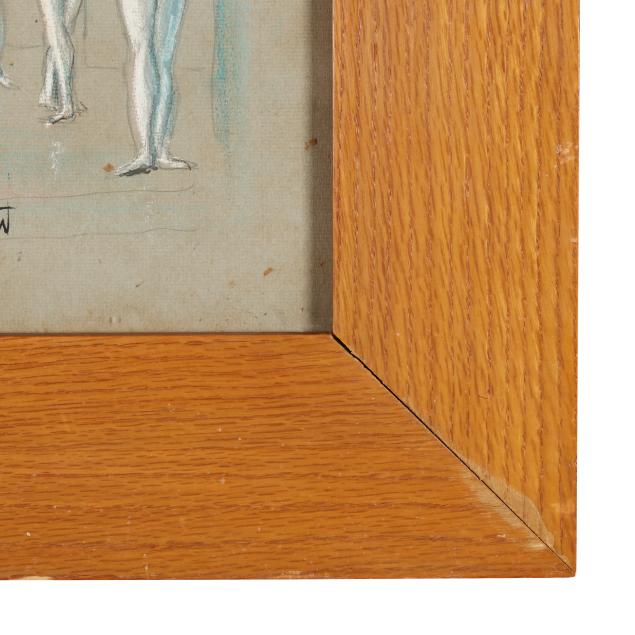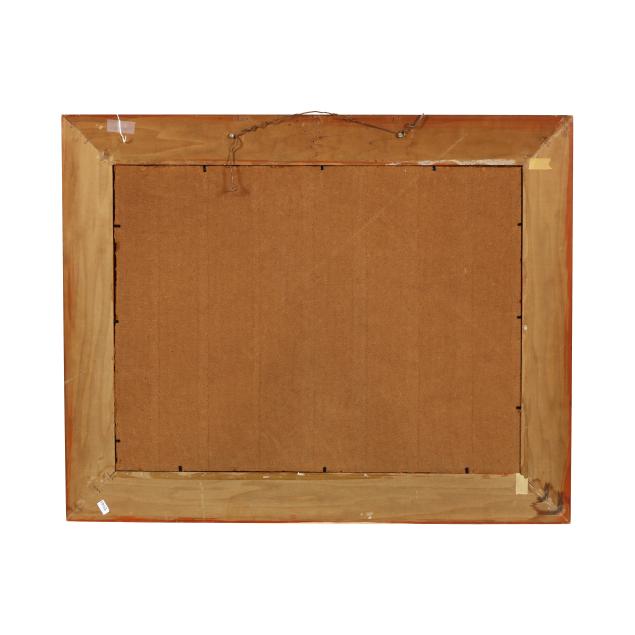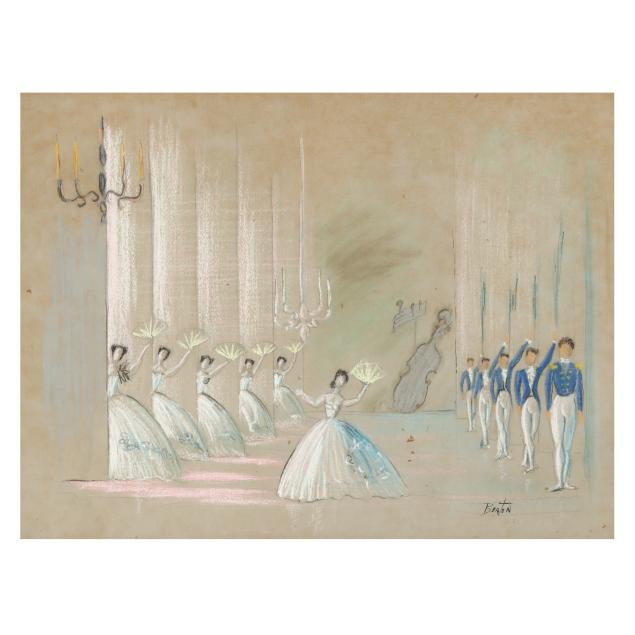
Lot 1017
Cecil Beaton (English, 1904-1980), Scenic Design for a Ballet
Explore more items like this one.
Visit our Fine Art Department Fine Art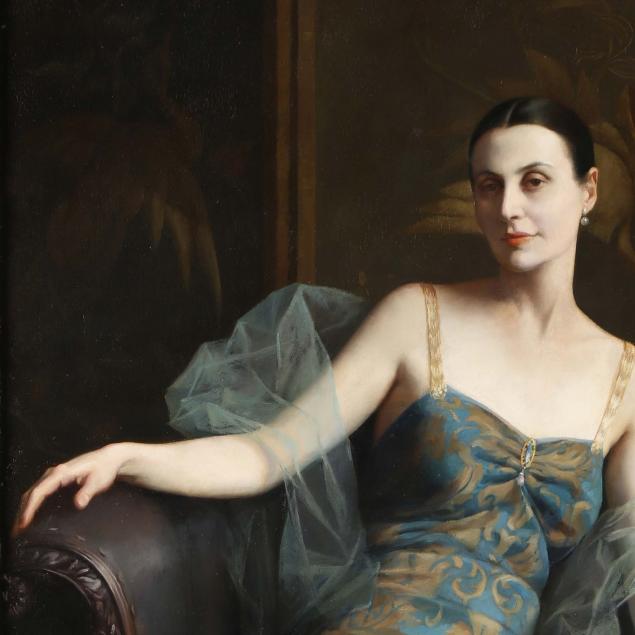
Lot Details & Additional Photographs
Sheet 18 1/2 x 25 in.; Frame dimensions 25 3/4 x 32 in.
This is a design for a ballroom scene in Apparitions, a ballet choreographed by Frederick Ashton for the Sadler's Wells Ballet. The ballet premiered on February 11, 1936 and featured music composed by Franz Liszt.
Sir Cecil Beaton was a British photographer, designer, and writer, best known for his striking portraits of celebrities, royalty, and cultural icons. Born in London, he developed an early passion for photography, influenced by his nanny’s camera and the glamour of high society. By the 1920s, he gained recognition for his fashion photography in Vogue, where his highly stylized and theatrical compositions set him apart. Beaton’s talent extended beyond photography—he designed elaborate costumes and sets for stage and film, earning Academy Awards for Gigi (1958) and My Fair Lady (1964). His portraits of Queen Elizabeth II, the Bright Young Things, and wartime Britain solidified his reputation as one of the 20th century’s most influential visual artists.
In addition to his visual artistry, Beaton was a prolific writer and diarist, offering insightful and sometimes biting commentary on the cultural elite of his time. His war photography, commissioned by the British Ministry of Information, captured the resilience of the British people during World War II, adding depth to his otherwise glamorous portfolio. He maintained close relationships with figures such as Greta Garbo, Truman Capote, and the British royal family, further cementing his legacy in both high society and the arts. His work continues to be celebrated for its elegance, innovation, and ability to capture the spirit of an era.
1/2 tear to top center of sheet; toning to sheet.
